Sony Q&A at CP+ 2023: Sony’s lens strategy, why the new FE 50mm F1.4 GM is *so* good and more
posted Tuesday, April 4, 2023 at 7:25 PM EDT
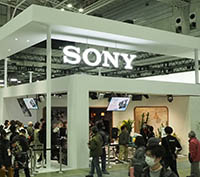
There’s been a lot of activity in Sony’s lens lineup lately, with the second generation of some of their classic designs appearing recently, and some entirely new models as well. Just before the start of CP+, they announced a frankly amazing update to the well-regarded 50mm F1.4 Zeiss first released 6 years ago.
I was thus happy to have the chance to speak with Masanori Kishi, who is the Senior General Manager of their Lens System Business Division, in the Imaging Products & Solutions Business Group. Kishi-san has overall responsibility for developing and bringing to market the ever-broadening range of E-mount lenses.
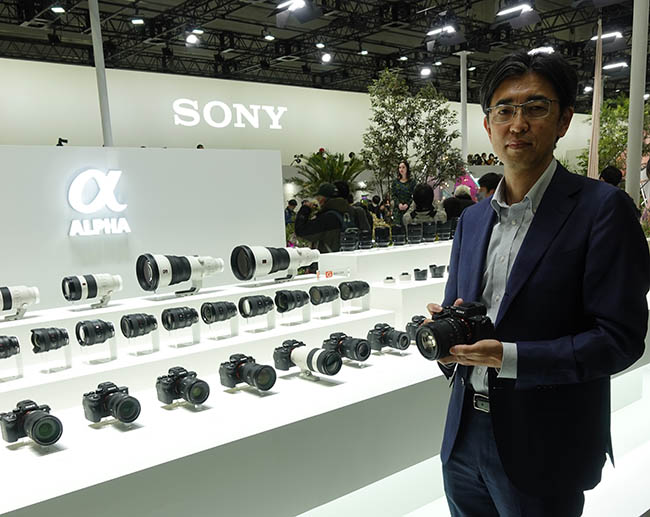
He gave me a good view of Sony’s strategy and general direction in their lens development, as well as some technical details about the technologies that let them make the new FE 50mm F1.4 GM so amazingly light and compact, while still delivering extraordinary optical quality.
Anyone interested in Sony’s general philosophy and guiding principles of lens development should find this an interesting read.
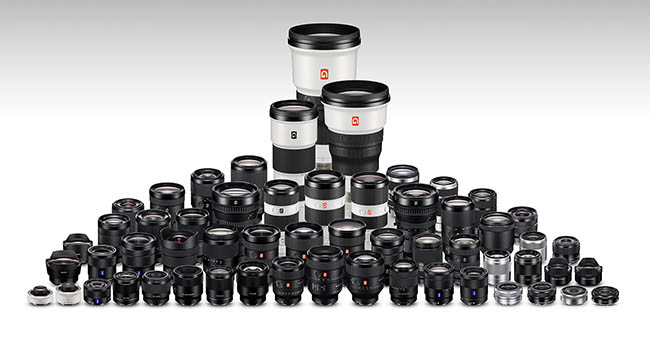
What’s Sony’s lens strategy?
DE: How do you see the recent and future lens market and what is Sony’s lens strategy?
MK: We expect the mirrorless camera market will continue to grow, and Sony achieved the No.1 unit and revenue share in the global full-frame mirrorless camera market in FY2021, and also achieved No.1 share in the overall mirrorless market on a unit basis.
Sony has built up a strong position in the mirrorless market since it introduced the first mirrorless camera with E-mount back in 2010, by continuously reinforcing its lineup of body and lens. A point to note is that, within the full-frame segment, we have continuously rolled out unique and high value-added products into the market ahead of the game, listening to customers’ voices and trying to exceed customers’ expectations, which lead our lineup to become suitable for wide range of customers from amateur to professionals.
Also, the advantage of Sony’s E-mount is that this one single lens mount fully covers full-frame to APS-C format, stills & movies, from Alpha mirrorless cameras to Cinema Line cameras including the CineAlta VENICE camera. To meet the increasing demand for video, we will continue to retain our strong position with capability to meet our customer’s needs, including content creators or videographers.
The lens market is frankly growing, from 2020 to 2022, and the mirrorless full-frame lens is the main driver in terms of the amount. Customer demand is very strong. We think this trend will continue.
DE: So as you say, full-frame has been driving it. Of course, you have many more full-frame bodies than sub-frame ones…
MK: Especially lenses, we have more full-frame lenses released, so the market has become very active for them.
DE: I’m trying to think how best to phrase this… How do you feel about new designs vs reworking previous designs, as was the case with the new FE 50mm F1.4 GM. I think you’ve also refreshed some other designs, that you now have a model II for. Do you see more of that, updating particular focal lengths and apertures, using the latest capabilities, the latest optical glass, etc, or do you look more to expand to different, more unusual focal lengths?
MK: Regarding the G Master F2.8 zooms, like the 24-70mm and the 70-200mm, we launched the Mark I models six years ago, and these lenses were very well-accepted by customers; the customers really enjoyed these lenses. And also, we got a lot of requests from the customer to improve these products, using the latest technologies. The improvement in lens technology over the last six years has been huge. So the customers wanted newer models using the latest technologies, especially for optical performance, AF tracking speed, and more lightweight And as you know, many customers are shooting not only stills but also videos, so some customers required an update for better video capability. So these were the background, and we decided to release new versions using the latest technologies.
But our motivation to make new lenses is not focused on renewing older designs, we always try to deliver new imaging experiences to the customers, new shooting experiences. So that is our motivation for developing new lenses. The main purpose is not to renew older designs, using the latest technological capabilities. We'd like to continue supporting our customers' creativity by delivering the new value of lens and providing them new imaging and shooting experiences.
DE: Ah, you want to use the new technology to make lenses you couldn’t make before or that would have been too expensive to manufacture. As you say, you want to bring fundamentally new experiences for the users.
MK: Yes, we want the customers to have experiences they couldn’t before by our lens technology improvement, that is our -motivation. As you know, the E-mount system has a very wide variety of customers, right? So our variety of products, not only with lenses but also the bodies, from consumer customers to professional customers. There’s a huge range of use cases, it’s very broad, a very wide range of usage that the customers require. So we’d like to support their needs with many different lenses. We’d like to expand our lens lineup from that point of view.
DE: That makes sense. So just the key products like the FE 70-200mm F2.8 GM OSS, the FE 24-70mm F2.8 GM, here’s demand for upgrades, but across the rest of the line there isn’t as much – and there’s more benefit for people to be able to broaden their experience.
This came through loud and clear: Sony’s lens strategy will lean towards new designs, with new focal length/aperture/zoom range combinations not currently in their already extensive E-mount lineup. They’ll refresh mainstream, high-volume lenses like the 24-70mm and 70-200mm F2.8 and 50mm F1.4 where user demand is high, but their first choice will be to “expand the user experience” through all-new designs. Their customer base is *very* diverse and wide-ranging, so there’s always another use-case that needs covering in one segment or another.
They’ll always respond to user demand for updates to classic lenses, and their new FE 50mm F1.4 GM design is a spectacular example of just how far lens technology and optical design has come over the last few years, but their main push will be towards using new tech to enable entirely new experiences for their users.
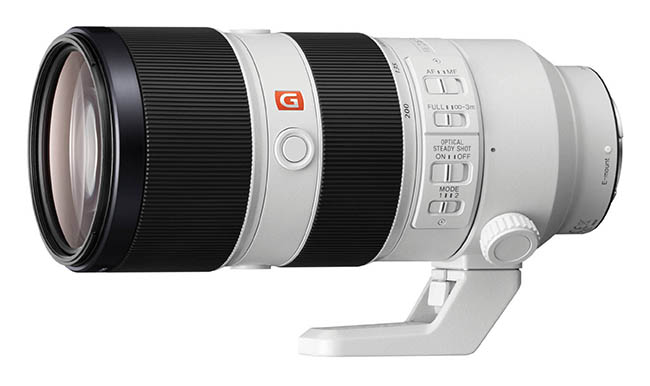
Will the previous FE 70-200mm F2.8 GM OSS lens stay in the market?
DE: So speaking of the 70-200mm, I see that the original FE 70-200mm F2.8 GM OSS lens is still being sold, even though the new version II is shipping. This kind of makes sense to me, as it’s still an excellent lens, and is $800 cheaper (in the US) than the new GM II model. Will the original model continue to be sold going forward, or is it limited to stock on hand?
MK: Both lenses have been used by many customers in various situations, and we have received requests for higher image quality, smaller size and lighter weight, as well as faster AF speed and better focus tracking capability. We are also aware that customers’ needs have changed and been diversified recently, and the need for movie shooting in particular has increased a lot. To meet a wide range of customer needs for both still and movie shooting, we decided to release the second-generation of G Master lenses, fully equipped with the latest technologies including key optical elements and a floating focus design that uses the unique Sony-developed XD Linear Motors.
MK: I can’t specifically discuss the future development strategy, but E-mount has a wide range of customers, so their demand is completely different. So we’d like to provide different options for various kinds of customers. So we’d like to consider that.
DE: Yeah, I think it makes sense that with a price difference of $800 US between the older and newer models, maybe people don’t need to have the very, very latest technology, and would like to save the $800.
This is good news for users: The previous 70-200mm F2.8 zoom was a great lens and will continue to be sold alongside the new version. The new model has dramatically improved performance in just about every aspect, but it’s selling for $800US more than the already well-performing previous model. The latest version is a truly dramatic upgrade in just about every respect, but the already-excellent previous version will be entirely adequate for many users, and much more affordable.
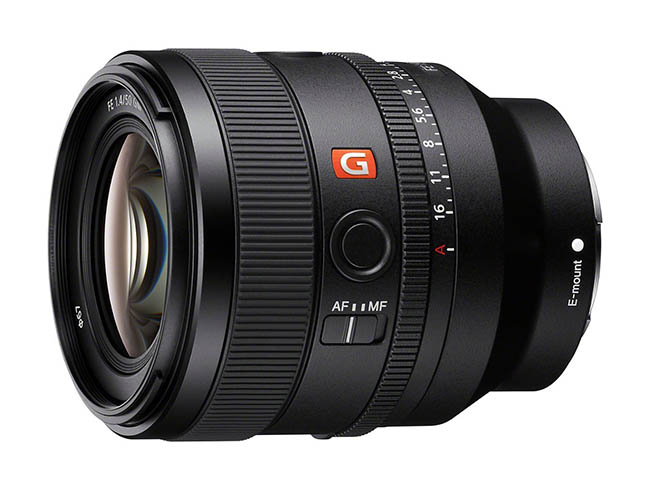
The motivation behind the new FE 50mm F1.4 GM
DE: I think you kind of addressed this in terms that it comes from customer demand, but the new FE 50mm F1.4 GM (announced on February 21) replaces your Zeiss 50/1.4 from six years ago. My question had been what was your main motivation to develop it, but I think you already answered it was customer demand for an update to a very popular focal length/aperture combination. So just like with the 24-70/2.8 and 70-200/2.8, with the 50/1.4 many people were asking for an update. Or was it more that you saw that you could make such a dramatic improvement that you decided to do it anyway?
MK: The motivation is the same as I previously explained. The 50mm F1.4 Zeiss lens has been very well accepted for many years due to its reputation for high image quality, as we’ve seen in the good feedback from the customers. On the other hand, we already launched the 24mm and 35mm F1.4 G Master lenses with very high optical performance and very compact sizes. This concept is very popular with the customers. [high optical performance with compact size] So many customers asked us to please create the same concept in a 50/1.4.
DE: Yeah, that was why I was so surprised when Nami-san handed me the lens, because I remember the Zeiss version was very big and heavy, it was a lot of glass. The new model was so impressive to me, because it was *so* light. Yet it has much higher optical performance.
While their overall focus is on creating entirely new lenses, the 50mm F1.4 is an example of where user requests carried the day. A 50/1.4 is a classic lens, but beyond that there apparently was a lot of demand from people who wanted a better-matched F1.4 partner for the compact and high-quality 24mm and 35mm F1.4 lenses.
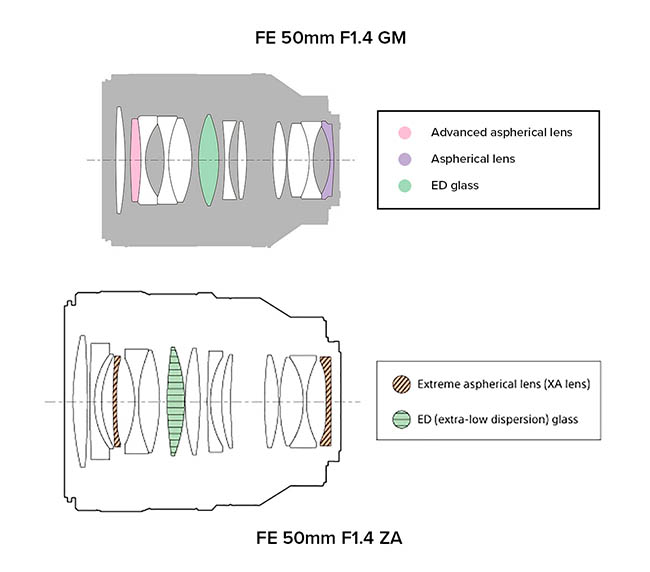
The technologies that made the FE 50mm F1.4 GM possible
MK: To be honest, it’s not easy to realize a 50mm F1.4 in such a compact size. To realize this product, we developed many preferred [new] technologies, not only the optical design, but also technologies to realize the packaging. Furthermore, our advantage is that we are developing all these key peripheral technologies of lens in-house from device level. So all technologies can be optimized perfectly and packaged for just one lens product, including customization of details of each device and optimization of controls. Through the fusion of these technologies, a perfect harmonization of optical design, mechanical design and control design has been achieved, and generating a new optical design configuration.
DE: Ah, so mechanical elements, the focus drive…
MK: Yes, aspherical element improvements really helped make this design so compact, that was a big contributor to being able to make it so small. Also the focus actuator, this lens uses two XD Linear Motors, and this contributed to the miniaturization of the lens as well.
DE: So the linear motor makes it much more compact - I guess because with a stepper motor, you have something rotating that you have to convert to linear motion with a gear train, while a linear motor is just a thin structure along the axis of the lens.
MK: Yes, a linear motor just generates thrust directly. Many actuators have to translate rotation to linear motion. This mechanical construction generates a power loss; it’s not very high efficiency.
DE: Ah, yeah, it wastes energy in the gear train.
MK: Right, it also generates mechanical noise and takes a lot of physical space. But a linear motor can be much smaller and have much higher efficiency. And our XD Linear Motor has very high efficiency, so it generates a lot of power and we can move a very heavy focus group.
DE: Ah – you don’t have to compromise on the mass of the focus group because the motor is so strong. So the designer can put more elements into the focus group.
MK: The focus group in the new 50mm has a high refractive index as well as high aberration correction power, because such a heavy focus group can be utilized. These different technologies together help realize the optical design improvement; it was truly an optical design breakthrough. It’s not just the optical design itself, but various technologies helped realize the innovative design.
DE: Yeah, you mentioned advanced aspheric technology, I think that’s an area that’s seen absolutely enormous advancement across the industry as a whole over the last five years or so. For instance, the ability to make double-sided aspherics and ones with large thickness variations. Also the ability to mold ED glass. We’re seeing a lot of new designs now that have a lot more aspherics, and elements with more extreme thickness ratios.
(This is exactly the kind of technical discussion I love…)
As Kishi-san and I discussed, there have been enormous advancements in lens technology over just the last five or six years. From my conversations with several companies, it seems that new optical glass formulations and advancements in manufacturing technology played roughly equal parts.
It surprised me a bit that there’s been so much advancement in optical glass formulations; even after learning some of the inner complexity from my tour of Nikon’s Hikari glass factory (https://www.imaging-resource.com/news/2018/04/17/glass-for-geeks-an-in-depth-tour-of-nikons-hikari-glass-factory) I somehow had the feeling that the state of the art was down to just minor tweaking of established formulas. Quite the contrary, it seems like there have been dramatic advances in things like high refractive index (HR) and anomalous-dispersion glasses (ED, XD, etc).
High refractive index glass means glass formulations that bends light more than ordinary types do. Dispersion refers to how glass bends different colors of light more or less. Think of a prism; low-dispersion glass would make a smaller rainbow than ordinary glass. Some exotic types might make a rainbow with the colors from red through yellow spread out but green through violet scrunched together. That would be called “anomalous dispersion.”
Optical glass is a complex blend of silica (SiO2 or quartz) and many other oxides. The refractive index and dispersion depends on the mix of oxides and how you cool the hot glass after mixing, but coming up with the right blend of ingredients and getting them to play nice with each other is as much art as science. Precipitation, crystallization and any of a dozen other things could spoil the batch. It’s a fine balance, but glassmakers have made huge strides in the last few years, giving lens designers a lot more options to choose from when they sit down at their CAD stations.
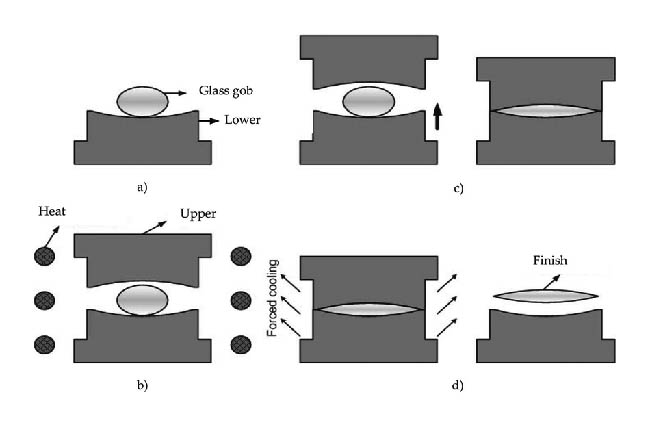
(Image credit Nguyen Ducnam, Industrial University of Ho Chi Minh, CC BY 3.0
Likewise, the technology for creating aspheric lens elements has advanced dramatically too. Modern aspherics are made by heating a glass blank and pressing it between tungsten-alloy molds with the desired shape. It’s insanely tricky to pull off, because the glass shrinks as it cools, and thin parts will cool faster than thick parts – leading to distortions or even the entire lens shattering. The biggest advance here is that manufacturers have figured out how to mold elements with very large ratios between the thinnest and thickest parts of the lens, also helped by new glass formulations.
The new FE 50mm F1.4 GM lens takes advantage of advances in both areas, using both high refractive (HR) and Extreme Aspheric (XA) elements to achieve its extraordinary optical quality in such a small package.
(For more detail on Sony's advanced lens technology, check out this interview I had with Mr. Motoyuki Ohtake, Sony Distinguished Engineer in their Opto Design Department back in 2016. It was a while ago, but the information is very relevant to the tech that went into the new FE 50mm F1.4 GM.)
What’s Sony’s competitive strategy for lenses?
DE: You’ve already said a bit about how you see the current and future trends in lenses among your users, but how do you view your competitors in the lens market?
MK: I cannot comment about other companies’ strategies, but as I mentioned, our E-mount system has a wide variety of customers. Sony already offers more than 70 E-mount lenses, some of which have already received feedback from our customers, and we have introduced new state-of-the-art technologies to evolve into a second generation to support our customers’ never-ending pursuit of creativity. We want to expand the customer base in various directions. All of the customers ask for more compact, more lightweight lenses with high optical performance. That kind of request has never stopped, they are always wanting more compact, lighter lenses. So in this decade we are focusing on many fundamental technologies to help create more compact, more lightweight lenses, but with very high optical performance. We will never stop this technology trend.
DE: I can see too that broadening the experiences as you called it also leaves fewer niches for other competitors to jump in and create some focal length/aperture/whatever that you don’t have in your line. Continuing to broaden your line makes it harder for third parties to get traction.
Given our previous discussion, this question may have been a little redundant: The same strategy that will lead Sony to increase customer satisfaction is also the best way to stay ahead of the competition. The triad of size, weight and optical performance was a recurring theme though; it seems there are a lot of users who want the high optical performance that used to require massive amounts of glass, but without the weight and bulk.

How do video needs impact lens design? Do they make it harder?
DE: You mentioned yourself that video is becoming very important, and many of your recent lenses have features like reduced focus breathing or stepless apertures that are important for videographers. I’m not sure if this is a sensible question to ask, but how much complexity or difficulty does it add to a lens design to minimize focus breathing? Is such a lens more expensive to manufacture, or does it just take more effort to design?
(To readers who may be unfamiliar with the term, focus breathing refers to a change in image size as the point of focus is changed. It’s both very common and a huge annoyance for video shooters whenever they want to use a focus shift to change the viewer’s attention in a scene. Having the image grow or shrink as the focus changes can be very distracting for viewers.)
MK: We recognize the growing demand for video, and we pay great attention not only to focus breathing and a click-less Iris, but also to focus accuracy and good tracking ability. Focus breathing is not easy to eliminate, from an optical design point of view. Perfectly corrected focus breathing is an area of great demand from the customers. But with the right kind of approach, we can reduce - not perfectly, but we can reduce the amount of it. To reduce focus breathing, the optical element layout has some constraints. But as I mentioned, many peripheral technologies can help the design and remove some kinds of those issues. These have been very effective in helping to reduce focus breathing. Not only the mechanical design, but also focus actuator control technology helps. But of course new optical design as well.
DE: I think I saw that when used on the higher-end bodies, the new FE 50mm F1.4 GM (already minor) focus breathing can be corrected in the camera. It makes a lot of sense to me that now that you have so much more computational power, you can do corrections like that in real time. As this computational ability migrates to your lower end models, will the need to design for lower focus breathing become less important? (That is, will having more powerful processors available across your whole range of camera bodies make it easier on the optical designers because they’ll be able to let the processor take on the task of eliminating focus breathing?)
MK: Focus breathing compensation in the body requires strong computing power and precise collaboration between the body and the lens control. But correction in the body means you have to do a bit of cropping, so too much focus breathing correction leads to more cropping. That means it is still important for us on the optical side to reduce focus breathing as much as possible, to keep the crop amount to a minimum. So both are important, the body and lens compensation are both needed.
The new FE 50mm F1.4 GM lens has very low focus breathing to begin with, but on the latest bodies, the body itself can compensate for what little is left on the fly. In-camera processing to correct for aberrations and distortion is pretty common. I’d been thinking that lens designers would be able to lean on the camera more and more, as faster processors moved down the product line, but it turns out that doing so too much would mean significant cropping relative to the frame at one end of a focus pull or the other. This was obvious to me the moment Kishi-san explained it, but hadn’t occurred to me initially.
Summary
Our conversation covered a lot of ground, and left me with a better understanding of Sony’s lens strategy, as well as some of the specific technological advances they’ve made that let them create a class-leading 50mm F1.4 lens that’s at the same time amazingly lightweight and compact.
The overriding theme of Sony’s lens development plans is to continue to expand the range of “experiences” they can offer their customers, in the form of new and unique combinations of focal length, aperture, zoom range, etc. - All the while striving to reduce size and weight as much as possible without compromising optical quality. They’ll update very popular lenses to use new and improved technologies where customer demand requires it (as was the case with the 24-70 and 70-200mm F2.8 zooms and the just-announced 50mm F1.4), but they’d much rather invest in broadening the range of options available to their customers.
Kishi-san noted that they serve an incredibly wide range of customers, from casual users through enthusiasts to professionals, shooting both stills and videos. The implication of this observation is that while they already have more than 70 E-mount lenses, there’s plenty of room for more models to serve different niches within their user base.
For those readers interested in a 70-200mm F2.8 lens, the good news is that it *seems* that the old version will continue to be sold alongside the new one. He didn’t explicitly state this, but it makes a lot of sense, given the current $800US price difference between the two. The original model was already an excellent lens, so will more than meet the needs of many users.
The new FE 50mm F1.4 GM lens is a pretty incredible optic. Having hefted the 50mm F1.4 Zeiss in the past, I was astonished when they handed me a sample of this latest version; it’s dramatically lighter, but its optical performance is better in essentially every way. It turns out there are several technologies contributing to this, but the two biggest ones are advanced aspheric lens elements and Sony’s powerful XD linear motors. The advanced aspheric technology helps enormously with correcting optical aberrations, making it possible to do so with fewer and lighter elements, while the XD linear motors are powerful, compact, and don’t require translating the spinning of a motor shaft into linear motion: They produce linear thrust directly.
We also talked some about minimizing focus breathing in a lens design. It’s apparently quite difficult to do, but new lens design techniques help accomplish it. Surprisingly (to me at least), having the more powerful XD linear motor actuators was also key, because they can use a larger, heavier focus group while still achieving fast autofocus performance. Another approach is to use the more powerful image processors in the latest cameras to compensate for focus breathing in real-time. This isn’t a universal solution though, because the more the camera needs to compensate for focus breathing, the more the image has to be cropped - so the lens designers still have their work cut out for them.
As always, it was a fascinating conversation, many thanks to Kishi-san for making time in his busy schedule to meet with me!